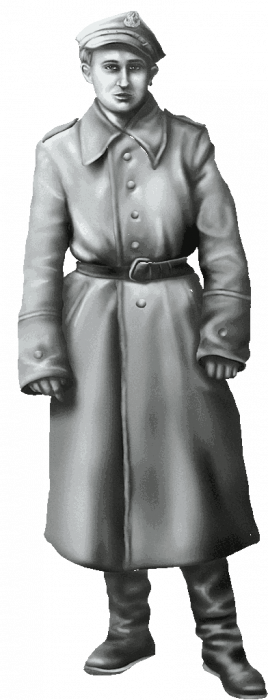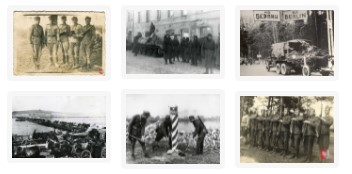
Jan
Soldier, First Polish Army (Berling’s Army)
Listen to his narrative
Polish Forces Under Soviet Command
Narrator Jan – Soldier Berling’s Army
By the time I found out about the “amnesty” for Polish citizens held captive in the USSR and the formation of a Polish Army under General Anders…. it was too late. Being young and strong, despite the deprivations and slavery of the gulag, I had not been told informed by the NKVD.
Several hundred thousand of my compatriots were left behind following the evacuation of Anders Army to Iran in 1942. Stuck in labour camps and kolkhozes throughout the USSR, and forced to take Soviet citizenship, our future was bleak.
But in May 1943 the Soviets announced that a Polish Division was to be raised on Soviet soil under Red Army command. At the same time, the Union of Polish Patriots, or ZPP, was created in Moscow. This was a communist puppet government led by Wanda Wasilewska.
The 1st Kosciuszko Infantry Division would be led by then Lieutenant Colonel Zygmunt Berling. Pro-Soviet, it was rumoured that he had gone AWOL from General Anders Army and was regarded as a traitor by our government-in-exile!
I arrived at the recruitment and training camp at Sielce in June 1943. What a desperate state we were – starving, diseased and near death. Many years later Berling gave his own impressions of the new recruits as they crossed the River Oka from the nearest railway station at Divovo:
“When these people came closer, we saw the material from which the Division had to be created. The picture was extraordinary. People whose appearance bore witness to the fact that they had come through extremely hard times…. There were people in rags which had once been jackets, with bundles, or with some kinds of boxes which had once been suitcases…. These were the people we had to make into soldiers”
Our spirits lifted when we were given the Polish Army uniforms of 1939, our symbol was the Piast eagle and both our flag and national anthem were Polish. We would speak Polish and there was even mass every Sunday! In our oath we had to swear brotherhood with the Red Army.
With so many recruits flooding in from the camps, in August 1943 we were transformed into the Polish 1st Corps.
But the Soviet terror was ever- present. Most of our officers were Soviet and mixed throughout our troops were NKVD spies and informants. We also received political “education” from the ZPP. It was best to be quiet and cautious. Those Poles who spoke aloud of rejoining the Polish army in the West were arrested by the NKVD and never seen again.
Our first combat on the Eastern Front in September 1943 was a disaster. With only 3 months of training we were not ready. In the battle of Lenino, near Smolensk, we lost 30% of our Division.
As we pushed the Germans back, our corps grew from liberated Poles who either volunteered or were conscripted into the Red Army. Desperate humanity continued to flow out from the gulags as reinforcements. In March 1944 our Corps became the 1st Polish Army. General Berling was our Commander but we all knew that he really answered to the Soviet General Zhukov.
We were under Rokossovsky’s 1st Byelorussian Front and in July we crossed the River Bug. What joy to be the first Polish forces back on home soil! Throughout July and August the fighting was fierce. Reaching the outskirts of Warsaw, we were ordered to halt. On the 1st of August the Warsaw Uprising broke out. But Stalin ordered us not to intervene. What despair and frustration for us. In mid-September General Berling sent a group across the Vistula to aid the insurgents. He was removed from Command and by the time we entered Warsaw, the AK had been defeated and the city was destroyed.
Our march pushed on. We fought side-by-side with the Polish Underground in Poznan. It was a ferocious battle. But after our victory we heard rumours that the Home Army fighters were arrested, deported and executed by Stalin.
A 2nd Polish Army took part in the Ukrainian Front operations, pushing southward into Czechoslovakia.
Over 200,000 Poles in the Red Army pushed through Western Poland in early 1945.
Finally we entered Berlin. The fighting was door-to-door and savage. The defenders of the city were young boys and old men and they fought to the death rather than being taken by the “Red Army”. In the streets around the Reich Chancellery and the Reichstag, we delivered the final blow against the Nazis.
Over 60,000 of my Polish compatriots lost their lives fighting for the Red Army. Germany was defeated. The USSR was free. But Poland was not….
Facts
Several hundred thousand Poles did not escape with Anders Army to Iran in 1942. In April 1943, following the Katyn dispute, the Soviets severed all diplomatic relations with the Polish Government-in-Exile…
Facts
Several hundred thousand Poles did not escape with Anders Army to Iran in 1942.
In April 1943, following the Katyn dispute, the Soviets severed all diplomatic relations with the Polish Government-in-Exile.
At the same time, the Union of Polish Patriots, or ZPP, was created in Moscow. This was a communist puppet government led by Wanda Wasilewska.
In May 1943 the Soviets announced that a Polish Division was to be raised on Soviet soil under Red Army command.
The 1st Kosciuszko Infantry Division would be led by then Lieutenant Colonel Zygmunt Berling.
Polish nationals, deported from Kresy to the USSR and then forced to take Soviet citizenship, were recruited.
The training camp was at Sielce on the River Oka, recruits were given the Polish Army uniforms of 1939 and the oath included swearing brotherhood with the Red Army.
In August 1943 the Division was transformed into the Polish 1st Corps.
Most of the officers were Soviet and mixed throughout our troops were NKVD spies and informants.
The first combat of the Polish 1st Corps in the Eastern Front was in September 1943. It was a disaster with 30% casualties.
The corps continued to grow from liberated Poles who either volunteered or were conscripted into the Red Army.
In March 1944 the Corps became the 1st Polish Army, commanded by General Berling.
The 1st Polish Army fought under Rokossovsky’s 1st Byelorussian Front and in July 1944 they crossed the River Bug.
The Warsaw Uprising began on the 1st August but Stalin ordered the Red Army to halt on the other side of the Vistula.
A 2nd Polish Army took part in the Ukrainian Front operations, pushing southward into Czechoslovakia.
Over 2.5 million men formed the Red Army that pushed through Western Poland in early 1945 – and over 200,000 were Polish.
The 1st Polish Army were part of the Soviet force that successfully took Berlin in May 1945, thus ending WW2.
Over 60,000 Poles lost their lives fighting for the Red Army.


